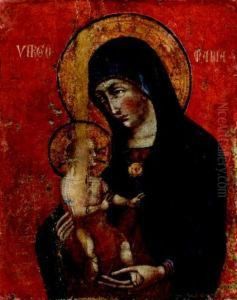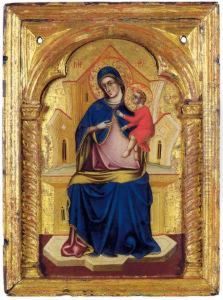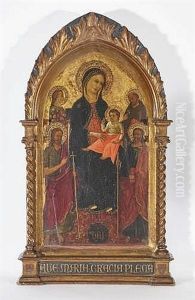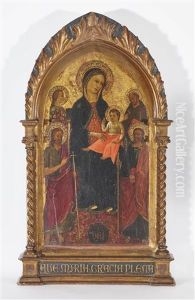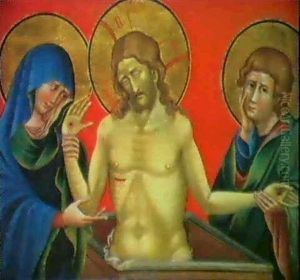Nicoletto Semitecolo Paintings
Nicoletto Semitecolo is an artist who was active in Venice, Italy during the latter half of the 14th century. His exact birth and death dates are not documented, but we know of his activity through archival records and existing works attributed to him. Semitecolo's artistic career is framed within the context of the late medieval period, which was characterized by a transition from Byzantine influences to the more naturalistic styles that would later dominate the Renaissance.
Semitecolo's work is significant for its incorporation of both Byzantine and Gothic elements, which was typical of Venetian painters of the time. Venice was a major trade hub, and its art was influenced by a variety of cultures, including those of Byzantium and Northern Europe. This blend resulted in a distinctive style that retained the gold backgrounds and iconic features of Byzantine art while also integrating the more expressive and naturalistic elements of Gothic painting.
Not much is known about Semitecolo's life outside his work. He is best remembered for his devotional paintings and manuscript illuminations. One of his most notable works is the 'Madonna dell’Orto', a large panel painting depicting the Virgin and Child enthroned, surrounded by saints. This piece is particularly lauded for its detailed representation of fabrics and textures, as well as its spatial depth – features that herald the coming innovations of the Renaissance.
Semitecolo’s work was well-regarded in his time, and he contributed to the visual culture of Venice by decorating churches and producing works for private devotion. However, as the Renaissance progressed, his style was eventually overshadowed by the new emphasis on humanism and the study of perspective, anatomy, and classical themes. Nevertheless, his paintings remain an important testament to the transitional period between the medieval and the Renaissance eras in art history, capturing a moment of stylistic evolution in Venetian painting.
